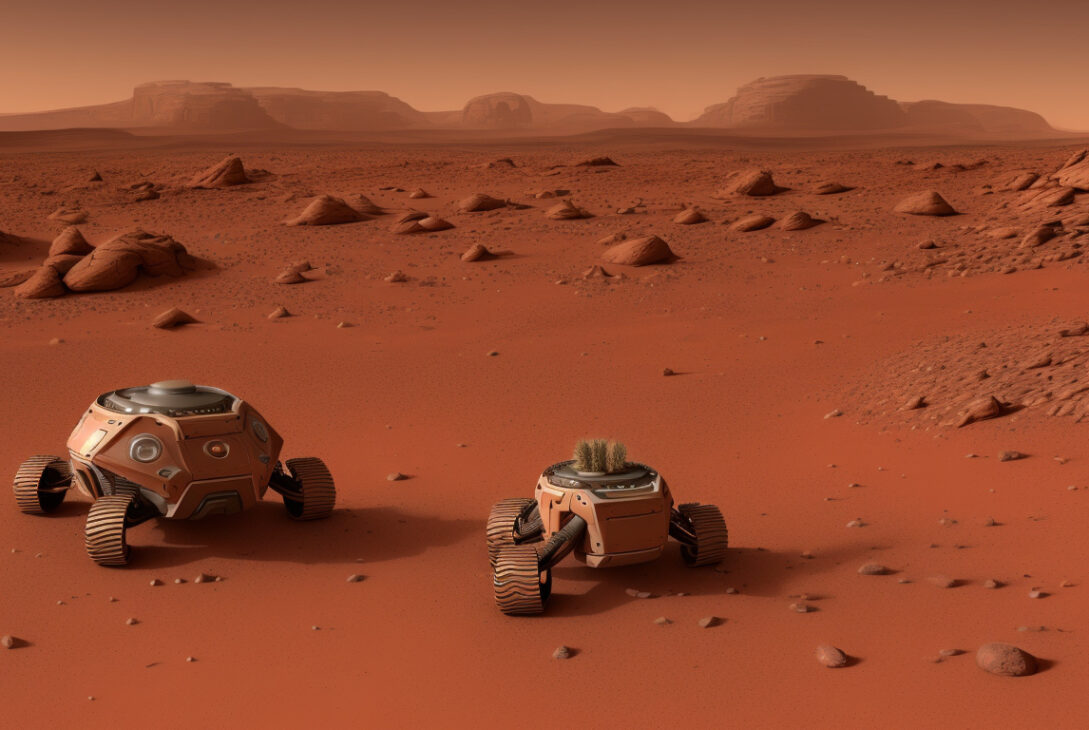Tumbleweed Rover Tests Mark a Transformative Step Toward Low-Cost Mars Exploration
September 25, 2025 — A novel approach to Mars exploration may soon revolutionize our ability to study the Red Planet through the deployment of lightweight, wind-driven spherical rovers called "Tumbleweed" rovers. Recent experimental results unveiled at the Joint Meeting of the Europlanet Science Congress and the Division for Planetary Sciences (EPSC-DPS) 2025 demonstrate the feasibility of these rovers to traverse Mars-like terrains using ambient winds, offering a promising low-cost, large-scale exploration strategy.
Harnessing Martian Winds for Mobility
Tumbleweed rovers are innovative 5-meter-diameter spherical robots designed to roll across the Martian surface powered solely by winds. By leveraging natural atmospheric dynamics, these rovers could cover extensive areas without the need for complex propulsion systems, effectively acting as a swarm of mobile atmospheric and environmental monitoring stations. Once their movement phase concludes, the rovers are engineered to collapse into stationary scientific outposts, capable of conducting long-term measurements and supporting future mission infrastructure.
Validated Through Wind Tunnel and Field Experiments
In April 2025, a 2.7-meter prototype known as the Tumbleweed Science Testbed was field-tested in an inactive quarry in Maastricht, Netherlands. The rover, equipped with commercial off-the-shelf sensors including cameras, magnetometers, inertial measurement units, and GPS, not only endured natural terrain but also successfully gathered and processed environmental data while rolling.
In a complementary set of tests in July 2025 at Aarhus University’s Planetary Environment Facility in Denmark, scaled prototypes ranging from 30 to 50 centimeters in diameter were subjected to controlled wind tunnel experiments simulating Martian atmospheric conditions of 17 millibars pressure. These trials confirmed that wind speeds between 9 and 10 meters per second were sufficient to mobilize the rovers across a variety of Mars-like surfaces including sand, pebbles, and boulder fields. Importantly, the prototypes also managed to ascend slopes equating to around 30 degrees on Mars, demonstrating notable terrain versatility.
Insights Into Martian Wind and Rover Performance
Dr. James Kingsnorth, Head of Science at Team Tumbleweed, who presented the findings at EPSC-DPS 2025 in Helsinki, emphasized the significance of the experimental validation: “We now have experimental evidence that Tumbleweed rovers could indeed function and collect valuable scientific data on Mars.”
Team Tumbleweed’s Mission Scientist, Mário João Carvalho de Pinta Balsemão, noted the conservative nature of their results, since the prototypes tested were heavier relative to their full-scale counterparts, suggesting that actual rovers may require even lower wind speeds to initiate movement.
Current understanding of near-surface Martian winds remains limited due to sparse data; however, measurements from NASA’s InSight lander and the Ingenuity helicopter have revealed that winds reaching or exceeding 10 meters per second occur frequently, particularly during daytime summer conditions in the northern hemisphere. These wind profiles bode well for the Tumbleweed concept, supporting predictions that a rover could traverse upwards of 422 kilometers over a 100-sol period, with potential maximum ranges reaching as high as 2,800 kilometers under favorable conditions.
A Global, Interdisciplinary Effort
Team Tumbleweed is an international team of entrepreneurial scientists with main hubs in Vienna and Delft, comprising members from over 20 countries. The group focuses on pushing Tumbleweed technology through successive development phases. The immediate future involves integrating more advanced scientific instruments—such as radiation detectors, soil probes, and dust sensors—into the rover payloads, refining rover dynamics models, and conducting further field experiments to enhance system readiness.
Next Steps: Atacama Desert Trials and Swarm Coordination
In November 2025, the team plans to conduct a new field campaign in Chile’s Atacama Desert, a Mars-like environment characterized by extreme dryness and rugged terrain. At least two Science Testbed rovers will be deployed, equipped with instruments from partner researchers internationally. These trials will emphasize the testing of swarm coordination algorithms, enabling multiple rovers to operate collaboratively and extend surface coverage while maximizing data collection efficiency.
Transformative Potential for Mars Exploration
The Tumbleweed rover concept holds promise for opening a new paradigm in planetary exploration by combining affordability, scalability, and autonomous operation. Swarms of these wind-driven rovers could provide unprecedented simultaneous atmospheric and geological observations over widespread regions of Mars, significantly enhancing our understanding of the planet’s environment and accelerating scientific discovery at a fraction of current mission costs.
For more detailed information, refer to the publication by James Kingsnorth et al., Preliminary Feasibility Assessment of the Tumbleweed Rover Platform and Mission using the AU Planetary Environment Facility, EPSC Abstracts (2025). DOI: 10.5194/epsc-dps2025-1775. —
Reporting by Europlanet
Edited by Gaby Clark
Reviewed by Robert Egan
[Subscribe to Phys.org newsletter for the latest updates on space exploration and science breakthroughs.]










